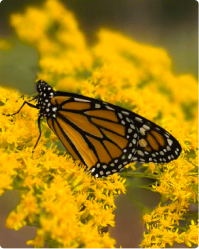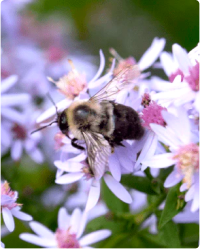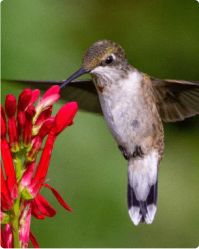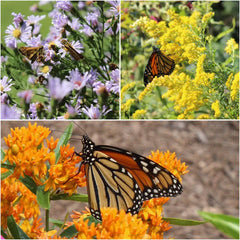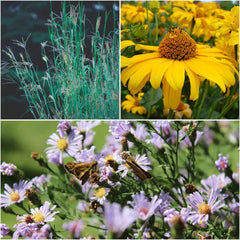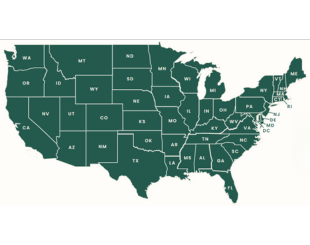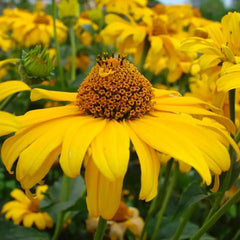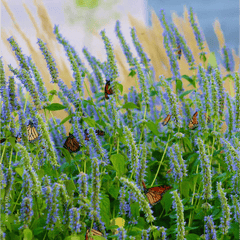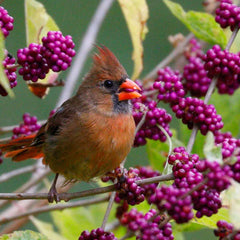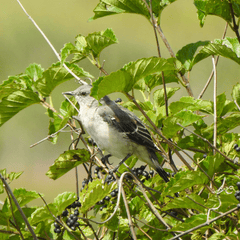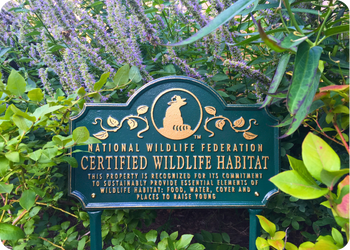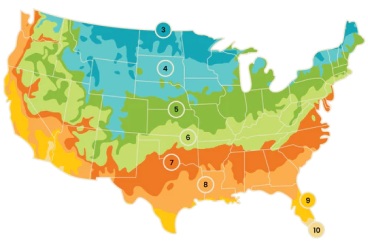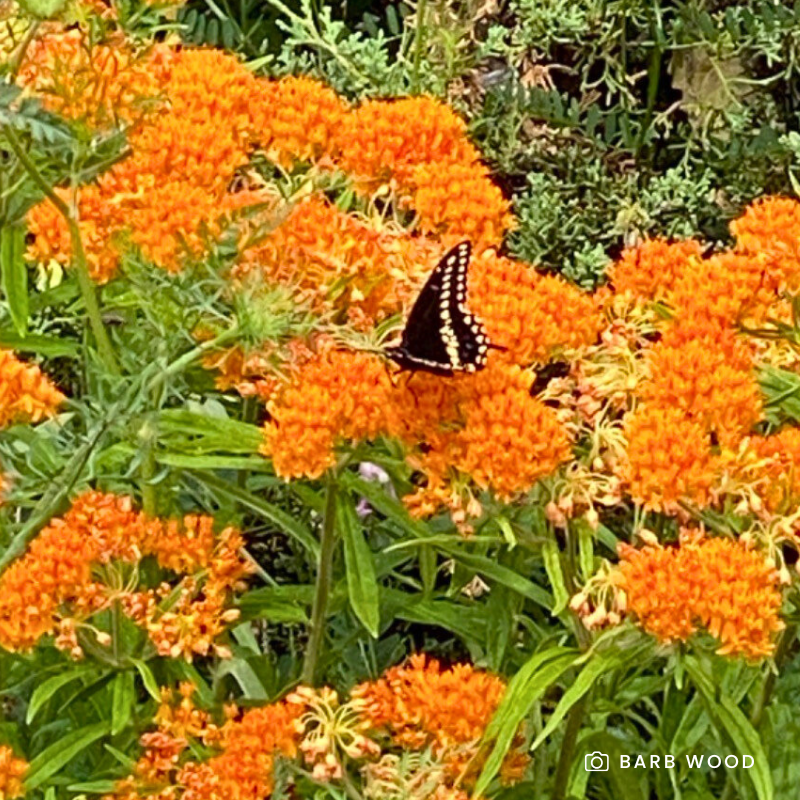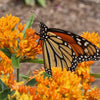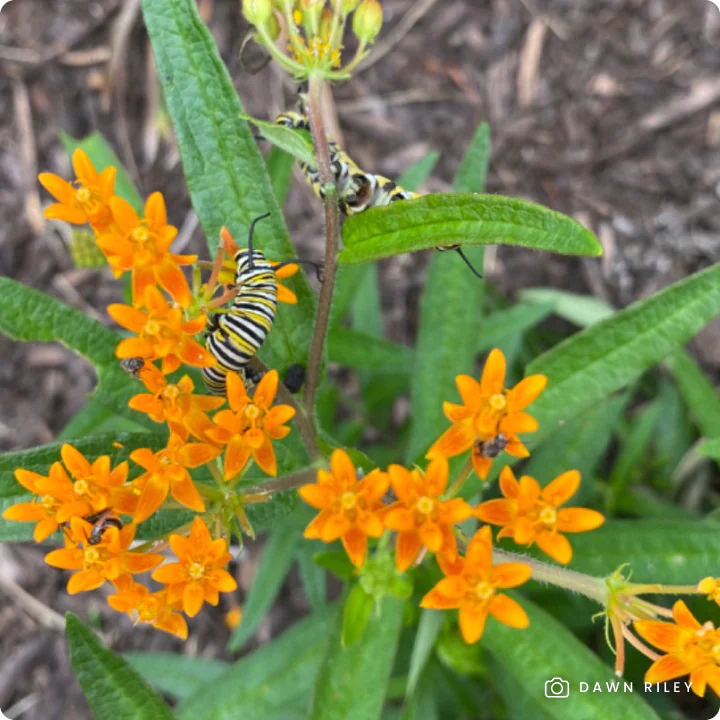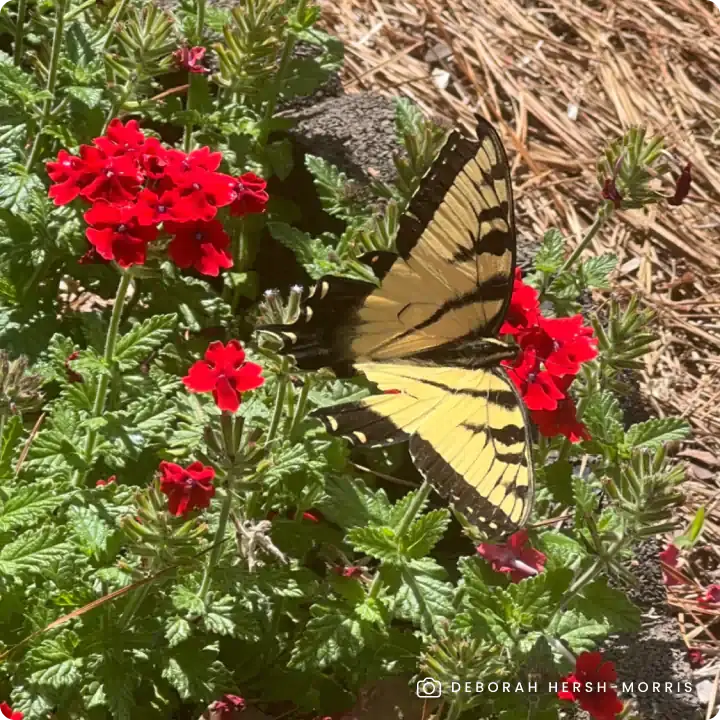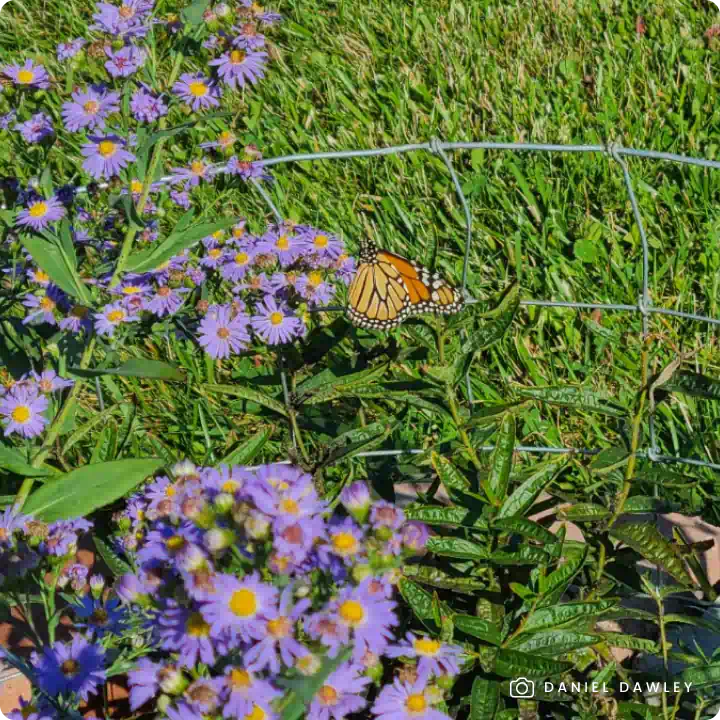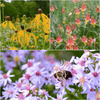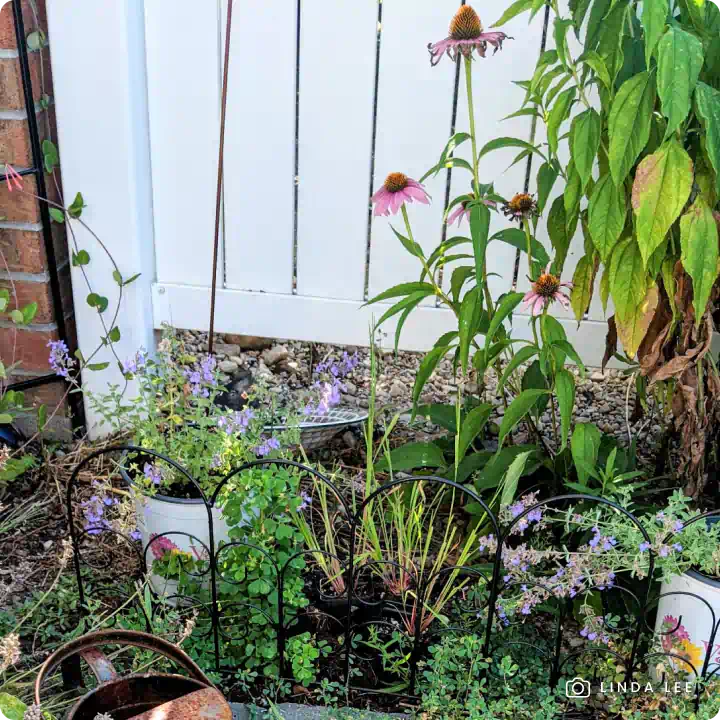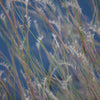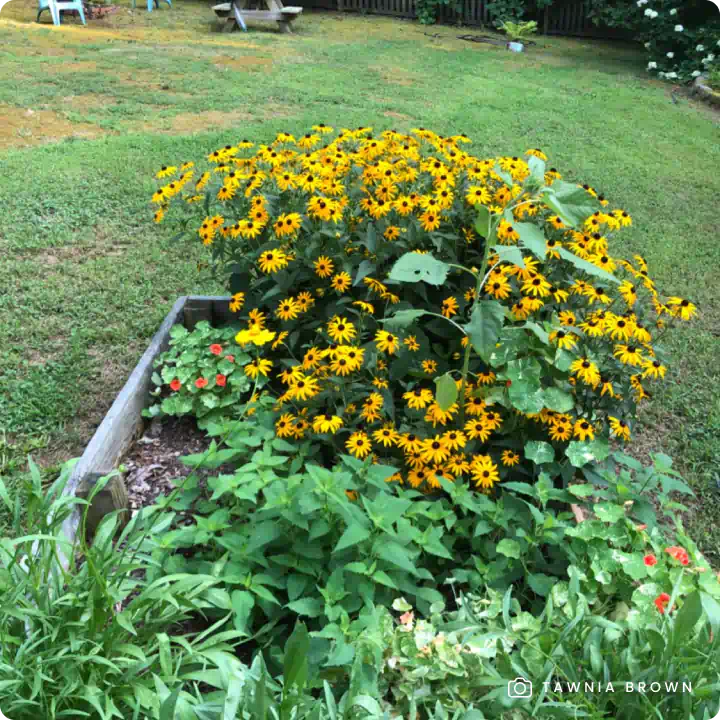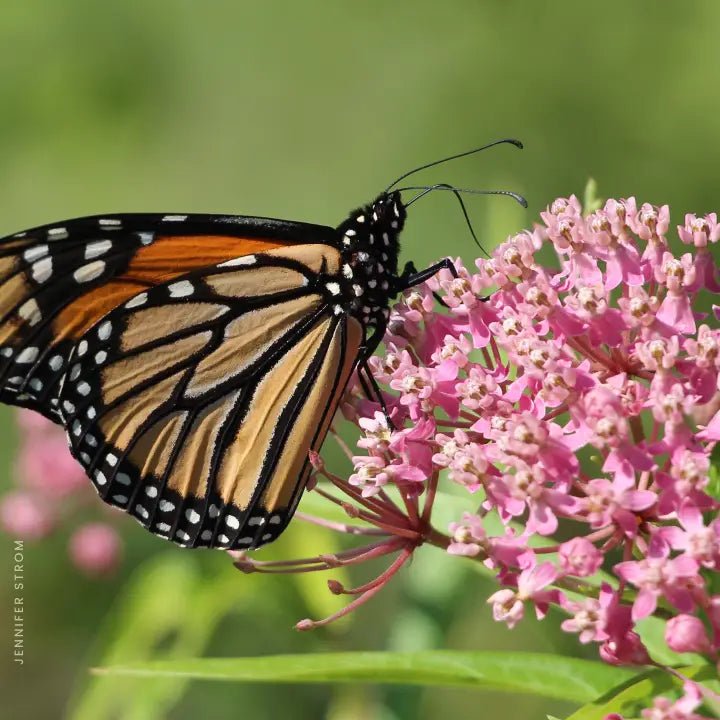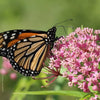Narrowleaf Milkweed (Asclepias fascicularis), also called Mexican Whorled Milkweed, is an essential host plant for Monarch butterflies in the Western United States. Female monarchs lay their eggs on its slender, whorled leaves, which provide a critical food source for emerging caterpillars. This hardy perennial blooms from late spring through summer with fragrant white flowers tinged in lavender, serving as a valuable nectar source for adult butterflies and other pollinators. It grows from 2-3 feet tall and spreads gently by underground rhizomes to form small patches. Its deep-rooted nature makes it highly drought-tolerant, thriving in a variety of soil and moisture conditions, and it is particularly well-suited for areas with wet winters and dry summers.
Why Choose Narrowleaf Milkweed?
- Essential for Monarchs: It is a host plant for monarch caterpillars and a valuable nectar source for adult monarchs, butterflies, and other pollinators. This species is considered the single most important host plant for monarch butterflies in California.
- Drought-Tolerant: The plant's deep roots make it resilient in dry, sandy, or clay soils once established.
- Pollinator Magnet: The fragrant white flowers attract a variety of pollinators, including butterflies, native bees, and hummingbirds.
- Low Maintenance: Requires minimal care and is naturally unappealing to deer and rabbits.
- Pollinator-Safe: Grown non-GMO and free of harmful neonicotinoids, promoting a healthy ecosystem for pollinators and wildlife.
Available in sets of three, six, or 12 plants to suit any garden size.
Planting Tips:
- Location: Plant in full sun for best flowering. It thrives in dry to moist, well-drained soils, including clay, and on moderate slopes.
- Watering: Water regularly during the first growing season to establish roots. Once mature, it is quite drought-tolerant and requires minimal water. Avoid overwatering.
- Maintenance: Minimal care required. There's no need to deadhead the flowers, as allowing them to go to seed provides a valuable food source for birds. Leaving the stems standing in the fall offers overwintering sites for beneficial insects. If desired, cut back the stems in late spring after pollinators have emerged. It can self-seed if pods are not removed.
For more information on planting, view our How to Plant Your Native Plants guide and other planting tips in the Garden for Wildlife Learning Center.
Add Narrowleaf Milkweed to your garden to support monarch butterflies, other pollinators, and local biodiversity with a resilient, low-maintenance native plant.
